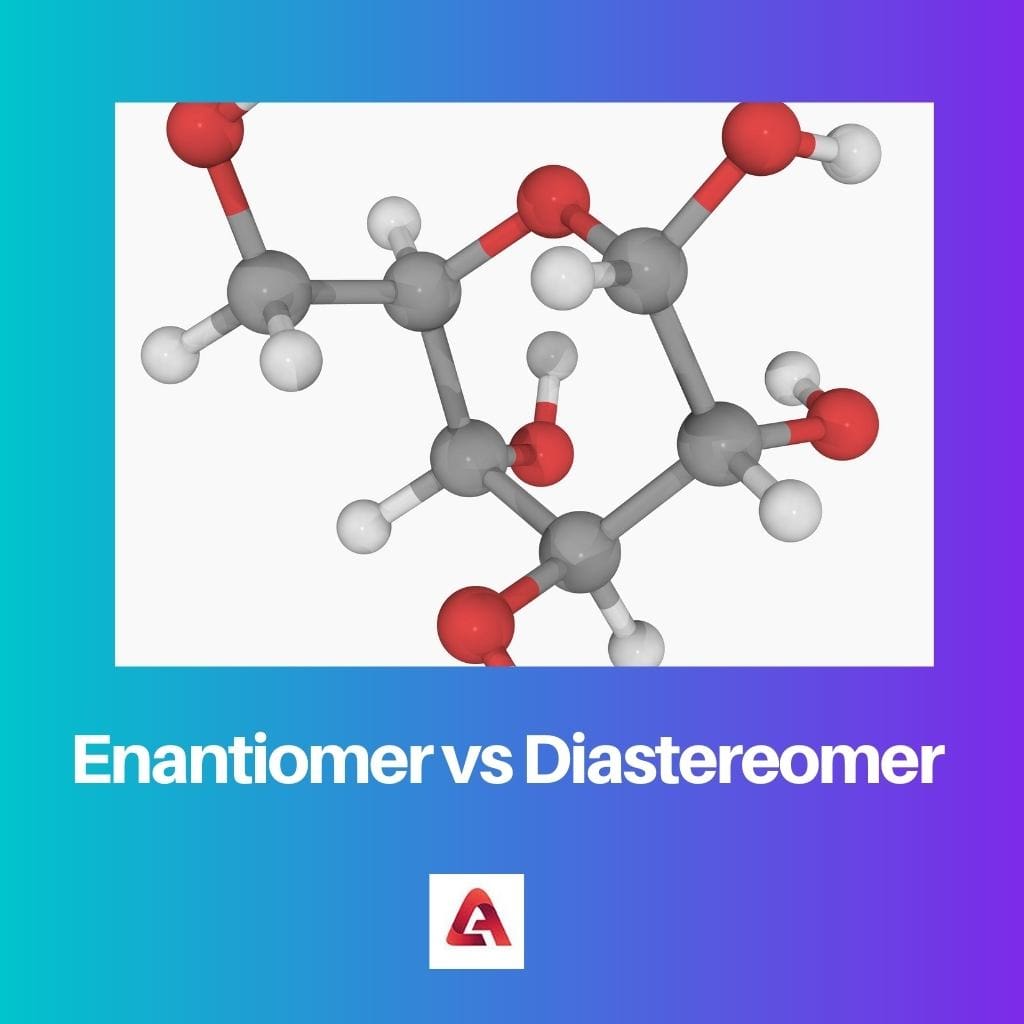Enantiomers are pairs of molecules that are non-superimposable mirror images of each other, sharing identical physical and chemical properties. Diastereomers, on the other hand, are stereoisomers that are not mirror images and differ at some, but not all, stereocenters, resulting in distinct physical and chemical properties.
Key Takeaways
- Enantiomers are non-superimposable mirror images of each other, while diastereomers are stereoisomers that are not mirror images of each other.
- Enantiomers have identical physical and chemical properties except for the direction in which they rotate plane-polarized light, while diastereomers have different physical and chemical properties.
- Enantiomers have opposite configurations at all chiral centers, while diastereomers have opposite configurations at some, but not all, chiral centers.
Enantiomer vs Diastereomer
Enantiomers are a type of stereoisomer that are non-superimposable mirror images of each other. They have identical physical and chemical properties. Diastereomers are stereoisomers that are not mirror images of each other. They have different physical and chemical properties, such as melting point and boiling point.

Comparison Table
| Feature | Enantiomer | Diastereomer |
|---|---|---|
| Relationship | Non-superimposable mirror images | Stereoisomers that are not mirror images |
| Stereocenters | All stereocenters are inverted | At least one stereocenter differs |
| Symmetry | Exhibit symmetry through mirror reflection | Lack symmetry through mirror reflection |
| Physical properties | Identical physical properties | Different physical properties |
| Chemical properties | Identical chemical properties | Different chemical properties |
| Number of pairs | One pair (mirror images) | Multiple pairs possible |
What is Enantiomer?
Definition and Characteristics
Enantiomers are a type of stereoisomer, molecules that have the same molecular formula and sequence of bonded atoms but differ in the spatial arrangement of their atoms. Specifically, enantiomers are pairs of molecules that are mirror images of each other and are non-superimposable. This means that no matter how the molecules are rotated or translated in space, they cannot be aligned such that all corresponding atoms coincide. Enantiomers possess identical physical and chemical properties except when interacting with other chiral entities.
Chirality and Symmetry
The key feature distinguishing enantiomers is chirality. A molecule is chiral if it cannot be superimposed on its mirror image. Enantiomers arise when a molecule contains at least one chiral center, also known as a stereocenter, where four different atoms or groups are attached to a carbon atom, leading to non-superimposable mirror images. Due to their mirror-image relationship, enantiomers lack internal symmetry; however, they possess an inherent symmetry through mirror reflection.
Importance in Chemistry and Biochemistry
Enantiomers play a crucial role in various fields, particularly in chemistry, pharmacology, and biochemistry. Their distinct three-dimensional arrangements can significantly affect their interactions with biological systems. For instance, in pharmacology, enantiomers of drugs may exhibit different pharmacological activities, potency, and side effects. This phenomenon, known as enantiomeric or chiral pharmacology, underscores the importance of separating and analyzing enantiomers in drug development and clinical practice.
Examples and Nomenclature
A classic example of enantiomers is the pair of molecules known as (R)- and (S)-2-butanol. These molecules differ only in the spatial arrangement of their atoms around the chiral carbon, resulting in mirror-image isomers. Enantiomers are designated using the R/S system or the D/L system, depending on their configuration at the chiral center. Additionally, in biochemistry, enantiomers are prevalent in naturally occurring compounds such as amino acids and sugars, where they can exhibit distinct physiological effects despite sharing the same chemical formula.
What is Diastereomer?
Diastereomers are a type of stereoisomer, which means they have the same molecular formula and connectivity but differ in the spatial arrangement of their atoms. Unlike enantiomers, diastereomers are not mirror images of each other. Instead, they have different configurations at one or more chiral centers while retaining the same configuration at others.
Stereocenter Configuration
Diastereomers differ in their configuration at one or more stereocenters. This means that while some chiral centers may have the same orientation, others will be arranged differently.
Physical Properties
Diastereomers exhibit different physical properties such as melting point, boiling point, solubility, and optical activity. This arises due to their distinct molecular arrangements and interactions.
Chemical Reactivity
Because of their unique spatial arrangements, diastereomers may react differently with other molecules. This can lead to variations in chemical reactivity and reaction pathways compared to other stereoisomers.
Number of Diastereomeric Forms
A single compound can have multiple diastereomeric forms, depending on its molecular structure and the presence of chiral centers. The number of possible diastereomers increases with the complexity of the molecule and the number of chiral centers.
Relation to Enantiomers
Diastereomers are distinct from enantiomers, which are mirror images of each other. While enantiomers exhibit symmetry through mirror reflection, diastereomers lack this symmetry and have different spatial arrangements.
Main Differences Between Enantiomer and Diastereomer
- Enantiomer:
- Definition: Enantiomers are stereoisomers that are mirror images of each other and cannot be superimposed onto one another.
- Chirality: They have opposite absolute configurations at all chiral centers.
- Relationship: Enantiomers share the same connectivity of atoms, but their spatial arrangement differs.
- Optical Activity: Enantiomers rotate plane-polarized light equally but in opposite directions.
- Physical Properties: Enantiomers have nearly identical physical properties such as melting point, boiling point, and solubility.
- Diastereomer:
- Definition: Diastereomers are stereoisomers that are not mirror images of each other.
- Chirality: They may have different configurations at some, but not all, chiral centers.
- Relationship: Diastereomers have distinct spatial arrangements, and their structures differ in more than just the orientation around one stereocenter.
- Optical Activity: Diastereomers may or may not exhibit different optical activities and can rotate plane-polarized light in the same or different directions.
- Physical Properties: Diastereomers have different physical properties, such as melting point, boiling point, and solubility, due to their varied structures.
- https://pubs.acs.org/doi/abs/10.1021/ja00095a053
- https://www.sciencedirect.com/science/article/pii/S0021967302017685
This article has been written by: Supriya Kandekar




